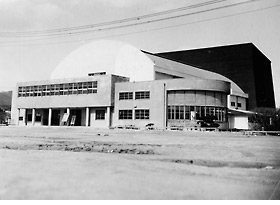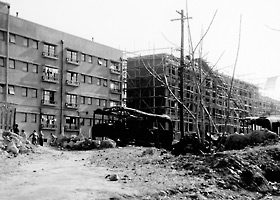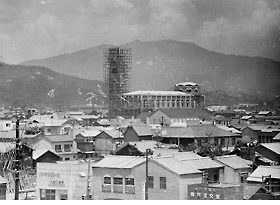Reconstructing the City
New Buildings
The construction of buildings lost in the A-bombing and of newly planned hospitals and cultural facilities was initiated. Many public facilities were built on nationally-owned land that had been conceded under the Hiroshima Peace Memorial City Construction Law. Some buildings were completed with the help of the goodwill of Hiroshima citizens and people worldwide who wished for peace.
 |
Children's Culture Center1949
|
|||
Construction of "Peace Apartment"1950
|
 |
|||
 |
Hiroshima City Hospital1952
|
|||
Memorial Cathedral for World Peace under construction1952
This cathedral was constructed to commemorate the A-bomb victims and pray for everlasting world peace through the efforts of Reverend Hugo Lasalle and others calling for the world to help construct the cathedral. Construction was commenced on August 6, 1950. In 1953, a "Peace Bell" was presented by the city of Bonn, West Germany, and a consecration ceremony was held on August 6, 1954.
|
 |
|||
